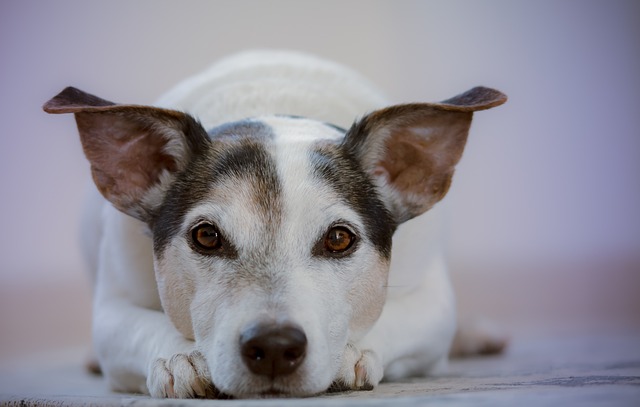
what will seizures do to a dog
Watching your dog experience a seizure is a heart - wrenching sight for any pet owner in the U.S. As a new dog parent, you may be left wondering: What will seizures do to a dog?
When we reach out to pet our normally lively and adorable dog, we are met with it constantly scratching and biting its skin, its once-sleek and thick fur now sparse and patchy, with large amounts of shed hair scattered on the floor and sofa, filling our hearts with worry and distress. Itchy skin and hair loss are common health issues in dogs, causing them significant suffering and tugging at every owner's heartstrings. Understanding the underlying causes and adopting scientific, effective treatment methods are key to helping dogs overcome pain and regain health, requiring both professional medical knowledge and our deep love for them.
The causes of itchy skin and hair loss in dogs are complex and varied, with parasitic infections being a common factor. Ectoparasites like fleas and ticks infest the dog’s skin surface, biting to suck blood and secreting saliva that triggers allergic reactions, causing intense itching. Dogs frequently scratch and shake their bodies to rid themselves of these parasites, and prolonged scratching not only breaks the skin but also leads to hair loss. Mite infections, such as those caused by scabies mites (Sarcoptes) or demodex mites (Demodex), burrow deep into the skin, causing sarcoptic mange and demodectic mange. Infected dogs develop redness, papules, scabs, and unbearable itching; in severe cases, the hairless area expands, exposing rough skin. Watching dogs tormented by parasites, owners wish they could bear the pain for them.
Fungal infections are another major cause, with ringworm—most commonly caused by Microsporum canis and Microsporum gypseum—being the most prevalent. Fungi thrive in warm, humid environments, and dogs with thick fur are prone to fungal overgrowth if kept damp or in unsanitary conditions. Infected skin develops circular or oval bald patches covered in grayish-white scales, accompanied by itching. Dogs lick and scratch the affected areas, worsening the condition and expanding hair loss.

In addition to parasites and fungi, allergic reactions can also cause itchy skin and hair loss. Dogs may be allergic to foods, pollen, dust mites, or certain medications. Upon contact with allergens, the immune system identifies them as harmful, triggering reactions like redness, swelling, itching, rashes, and hair loss. For example, some dogs allergic to beef or milk develop itchy skin and bite their paws or abdomen, leading to hair loss. Witnessing their suffering, owners feel both heartbroken and guilty, eager to identify and eliminate the allergens.
When noticing these symptoms, the first step is to take the dog to a veterinary hospital for a professional examination. Veterinarians will conduct detailed inquiries about the dog’s diet, living environment, and recent exposures, while performing comprehensive physical exams, including skin scrapings to check for parasites or fungi and blood tests to detect allergies or other underlying health issues. Only by accurately identifying the cause can a targeted treatment plan be developed.
For skin issues caused by parasitic infections, appropriate deworming medications are selected based on the parasite type. For fleas and ticks, topical treatments containing fipronil or imidacloprid are applied according to the dog’s weight and instructions to kill surface parasites regularly. Mite infections may require subcutaneous injections or medicated baths with ivermectin or doramectin, but dosages must be strictly controlled to avoid adverse reactions. During treatment, maintain a clean environment by washing and disinfecting bedding, toys, and other items to prevent reinfection.
Fungal infections are typically treated with a combination of topical and oral antifungal medications. Topical options like ketoconazole ointment or terbinafine spray are applied directly to affected areas to inhibit fungal growth, while oral medications such as itraconazole or fluconazole suppress fungal reproduction from within. Follow veterinary instructions strictly and complete the full treatment course; do not discontinue medication early, as this can lead to recurrence. Use an Elizabethan collar to prevent the dog from licking the medication, which could reduce efficacy or cause poisoning.
For allergic skin issues, identifying and avoiding allergens is paramount. Veterinarians may use allergy testing to determine specific triggers, after which owners should minimize the dog’s exposure—for example, switching to hypoallergenic prescription food for food allergies or reducing outdoor activities and using air purifiers for pollen or dust mite allergies. During allergic episodes, veterinarians may prescribe antihistamines or glucocorticoids to relieve symptoms.
Beyond medication, daily care is crucial for skin recovery. Keep the dog’s skin clean and dry with regular baths using pet-specific shampoos (avoid harsh human products), and thoroughly dry the fur afterward, especially in skin folds, to prevent moisture-related bacterial or fungal growth. Provide a nutritionally balanced diet rich in protein, vitamins, and minerals to boost immunity and promote skin and hair repair. During treatment, offer extra care and companionship to soothe the dog’s anxiety, as itching can cause restlessness.
Dogs are our most loyal companions, placing their full trust and dependence in us. When they suffer from itchy skin and hair loss, we must use professional knowledge, patience, and love to help them conquer their illness. Every trip to the hospital, every careful application of medication, and every gentle act of comfort are heartfelt responses to this precious bond. May our efforts help dogs quickly overcome their suffering, regain healthy, smooth skin and thick, lustrous fur, and continue to joyfully accompany us in life.

Watching your dog experience a seizure is a heart - wrenching sight for any pet owner in the U.S. As a new dog parent, you may be left wondering: What will seizures do to a dog?

Picture your Beagle, Charlie, suddenly collapsing in your New York apartment kitchen. His legs paddle wildly, jaw chomping at the air, eyes glazed—terrifying, helpless, and utterly disorienting.

Discovering your dog injured is a heart - stopping moment. Panic might set in, but your calm actions in these crucial moments can make all the difference, both for your pet’s well - being and in complying with animal welfare regulations.

You’ve just noticed your dog showing concerning symptoms like a swollen belly, restlessness, and unproductive vomiting. Panic sets in as you wonder: how long can dogs survive with GDV?

You’ve welcomed a new dog into your home, and as you watch them shy away from visitors or cower at the sight of a friendly face on a walk

For many dog owners, skipping nail trims might seem like a harmless oversight, but it can snowball into serious issues—both for your pet’s health and your legal responsibilities.